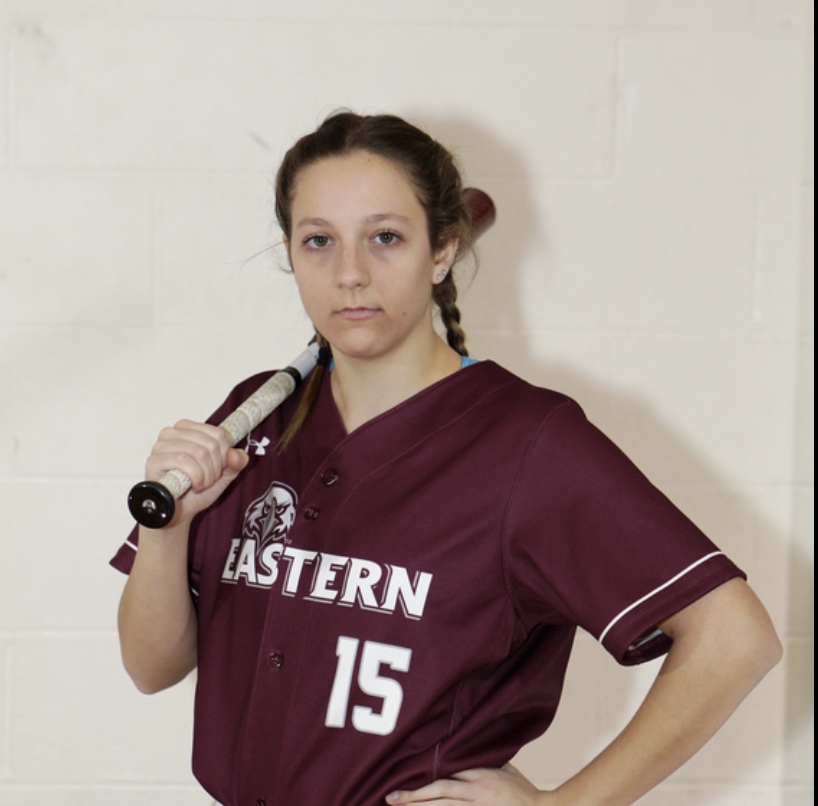Athletes who are hard of hearing playing at the collegiate level are few and far between when you look at universities outside of Gallaudet and RIT, schools whose programs are intrinsically inclusive because of their student population. Thankfully Eastern’s Softball program has adapted and proven that they are willing and able to provide an experience better than I could have imagined.
At the age of Four, I was diagnosed with a hearing loss. I have always been outgoing and loved to run
around and play games at school and began swimming and soccer at a young age. Swimming was easy to adapt to for my hearing loss as standard starting systems included a light that goes off as well to cue me to start a race. In soccer I played Goalie so that I could see the whole field.
In second grade I started playing softball and started to face some of the challenges that come with a hearing loss. When playing in the outfield, I could almost never hear my coach which prompted me to play third base in my first few years because when at our home field, our team bench was on the third base side. Batting was another challenge as players are required to wear a helmet which further restricts my ability to hear. This meant my coaches needed a way to communicate with me while at bat and on base and out in the field that did not rely on me being able to hear.
Communication is key to the game of Softball. How many outs there are, where the play priority is,
and general chatter between team mates on the field is essential to the success of the team. Hearing my
teammates call for a ball, or tell me they’ve got my back means avoiding collisions, laying out for a ball knowing that someone is there to have the others’ back if you miss, and knowing where to throw the ball that made it in the gap when my back is to the play. All of this chatter is key to the game.
But, when I can’t hear my teammates all the time, not because they’re quiet or soft spoken, but just because I can’t hear normally, softball can be both frustrating and challenging. The game becomes challenging and knowing what the coaches are saying from the bench can become almost impossible.
This is where hand signals became crucial. Over the years I have worked with my coaches to come up
with a set of hand signals to use to communicate which benefitted not only myself, but my whole team as well. On some teams I have used all hand signals where the coach would use their hands to tell me what to do by using predetermined signals that included fake signals to prevent other teams from catching on.
Other methods I have used are arm guards with number or number and color combos. Coaches typically
yell out those numbers or colors and the team can check their arm band for the play, but because these numbers are typically lost in the sound of the crowd or other team’s cheering, coaches will use a hand signal for the color and then flash the numbers with their hands to communicate with me.
As I got older, plays became more complex, and playing in the outfield became even more challenging,
so I transitioned to playing catcher. Although this may seem strange especially because it requires wearing a helmet the whole time, it was a position that is much more comfortable for me to play. Catching puts me in a position where I can see the whole field at once, and can hear my coaches a bit better from the bench. In many cases I am receiving a pitch call from my coach in the form of a hand signal to arm band format so that other teams won’t know what’s being thrown, and in some cases I call the game from behind the plate.
Though softball has not always been easy, I have been able to overcome the challenges of playing with
a hearing loss thanks to the unending support of the programs I have played for, awesome coaches, amazing team mates and supportive parents.

